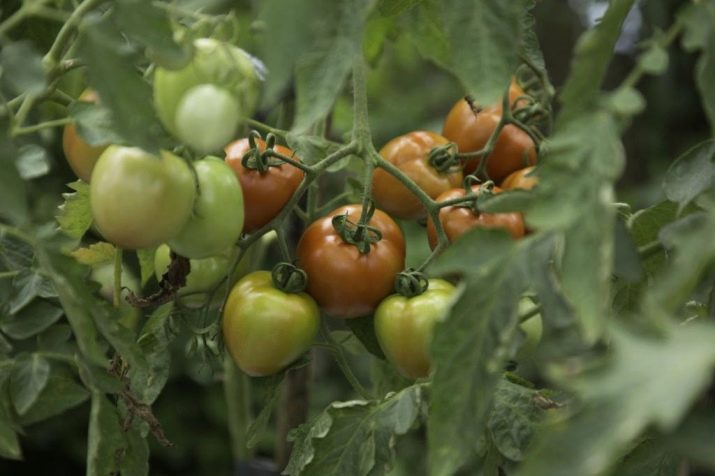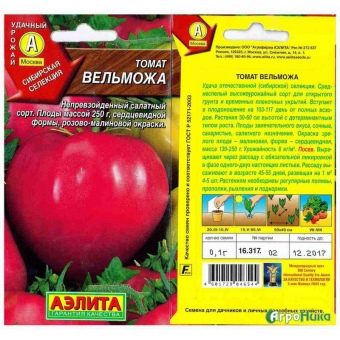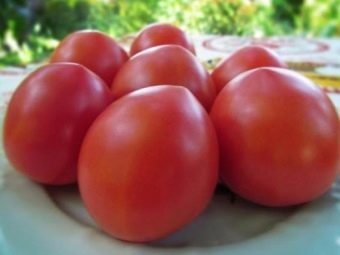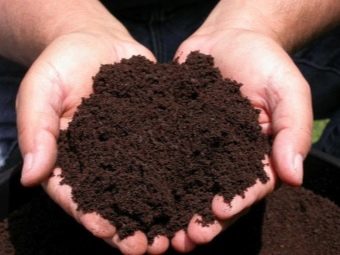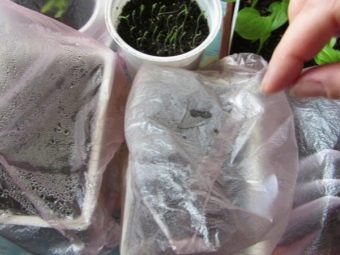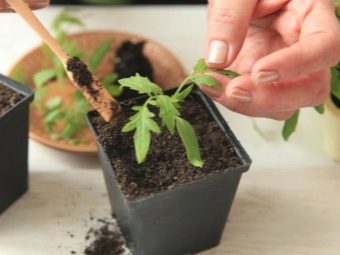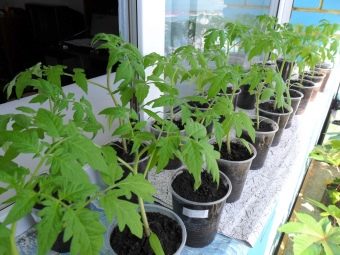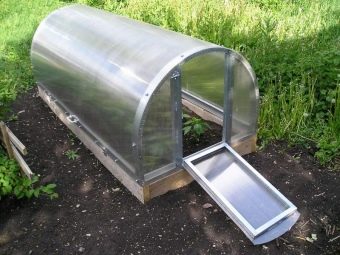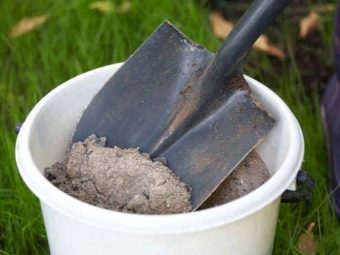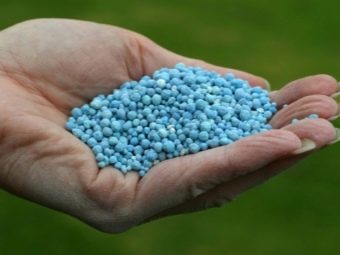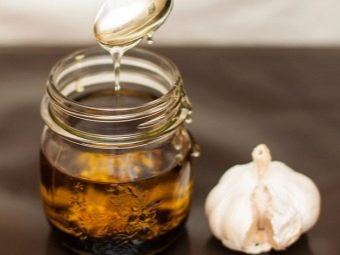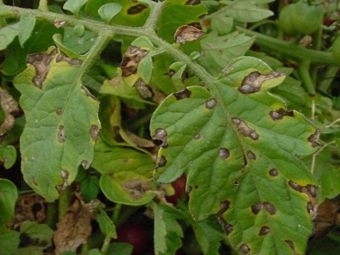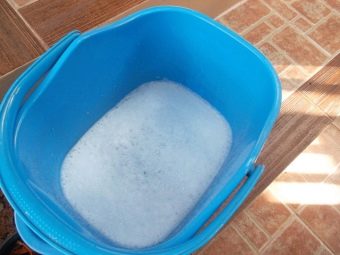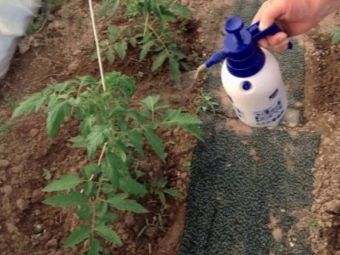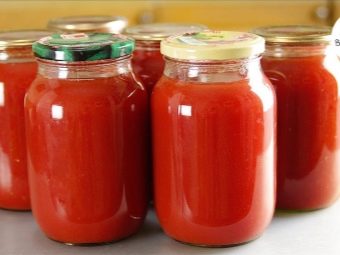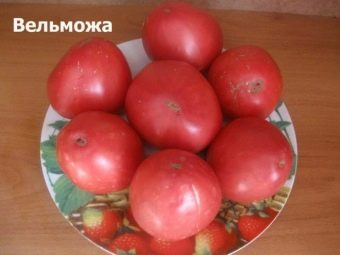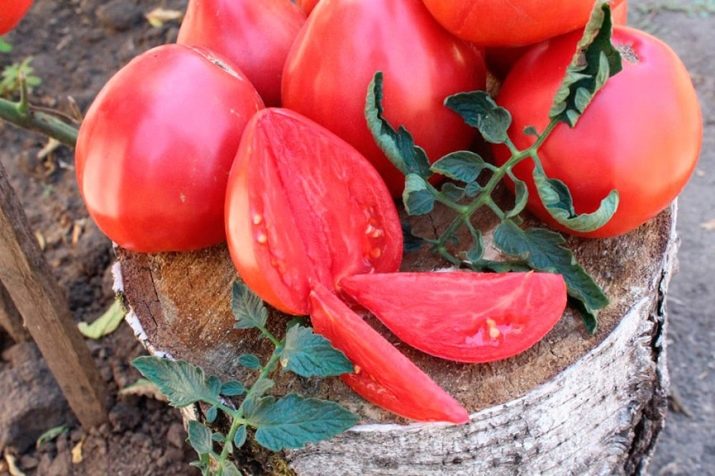Rules for growing tomatoes "great man"
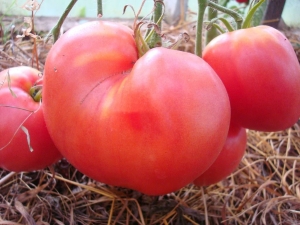
It is difficult to imagine a plot of an experienced gardener without a greenhouse or a greenhouse with tomatoes. Breeders do not cease to please summer residents with new varieties that differ in fruit appearance, yield, adaptation to certain climatic features and many other indicators. Among this variety, it is sometimes difficult to choose a variety in which the characteristics of a gardener would be combined.
Peculiarities of Tomato varietal "Grandee"
The variety “Velmozhma” was bred by domestic breeders specifically for planting in the harsh temperature conditions of the northern regions: the Urals, Siberia and the Far East. They are distinguished by good tolerance to weather changes and increased resistance to diseases peculiar to tomatoes (especially if they are grown in open ground).
These tomatoes belong to the type of “Bull's heart” and have external characteristics peculiar to it: the heart-shaped form of the fruit, color from pinkish to dark red. Tomatoes have a smooth and very dense skin, a very pleasant taste. Tomatoes are very large: on average, they weigh 300-400 g, but with good care, individual specimens can reach a weight of 1.5 kg.
These tomatoes are deterministic middle-ripening varieties, shrubs of adult plants are quite sprawling, if they are planted in the garden, the height of the plants will be about half a meter. In the greenhouse bushes can grow somewhat higher. Reviews of tomato mostly positive.
Advantages and disadvantages
Tomatoes "Grandee" are distinguished by a number of qualities that make this variety especially attractive to gardeners in most regions of Russia. Of course, this is high yield, cold resistance and excellent taste of the fruit. In addition, due to their determinism, the plants do not require mandatory garters. They are suitable for growing in a greenhouse, but grow well in open ground, as they are not afraid of temperature changes. When ripe, tomatoes do not crack, as they have a rather dense skin.
There are varieties and small flaws. Among these shortcomings can be noted the increased demands on the composition of the soil, compulsory pasynkovanie and the desirable removal of excess plants. In addition, to obtain high yields, the plant must be regularly fed and the proper watering should be observed.
Large fruits are not very convenient for canning as a whole and are poorly preserved fresh, therefore they are used mainly for the preparation of tomato paste, lecho and other household preparations.
Growing seedlings
Seed preparation for growing seedlings of tomatoes “Velmozhzha” should be started 60-65 days before it is planned to transplant plants into the ground. The prepared seeds are placed on a slightly rammed wet soil and sprinkled on top with a centimeter layer of peat or soil. Top capacity with planted seeds covered with a piece of cling film or glass and clean in a warm, about 25 degrees, the room where the future seedlings should stand until germination. Additional watering at this time the seeds are not required.
After the emergence of seedlings cover glass containers or film can be removed, and the plants are transferred to a well-lit room with a temperature of about + 14-17 degrees. Young seedlings are vital to receive a lot of light, and the cool temperature hardens it, making it less traumatic to transplant into the ground. And also this temperature regime has a beneficial effect on the development of the root system of seedlings. At this temperature, the plants should spend a week, then it can be increased to room.
After young plants have a second true leaf, you can perform a dive procedure, removing weak and non-viable plants. Healthy seedlings should be seated in individual peat pots or other suitable containers. If the containers with seedlings are on the windowsill, it is necessary that the leaves of the plants are at some distance from the glass. Otherwise, there is a danger of seedlings getting sunburn.
When the inflorescences begin to appear on the seedlings, the plant is ready for transplantation into the greenhouse or into the open ground. Just before this, the seedlings need to be quenched for a few hours in the open air.
Transplanting
Tomatoes "Grandee" in full accordance with its name is very whimsical to the fertility of the soil. If there is not enough nutrients in the land on which these tomatoes grow, we should not wait for a bountiful harvest. Therefore, the choice of planting place and fertilizer future beds should be approached with all responsibility. In autumn, the place for future planting should be prepared by fertilizing with ashes.
Since the plants of this variety differ in not very large growth, an arc greenhouse with a well-designed ventilation system is well suited for their cultivation. High greenhouse of this type is optional.
Calcium and phosphate mineral fertilizers can be applied as well as moistened well before planting the soil. The distance between the planted bushes should be at least 50 cm, the depth of planting - up to the cotyledon leaf. If you do not respect the distance between the holes, the adult plants will lack nutrients. In addition, the risk of developing tomato diseases will increase.
Transplantation of plants in the greenhouse is best done in cloudy weather or early in the morning. This will reduce the risk of sunburn from injured plant transplants and help them adapt to a new place more easily.
Basics of proper care
Tomatoes varieties "Grandee" need periodic feeding during the entire growing season. Potash and phosphate fertilizers are best for this. Nitrogenous abuse is not worth it: it can adversely affect the future harvest.
The necessary procedure is the staving of plants, the removal of lateral shoots below the first fruitful brush. But tying up these tomatoes is optional: their low bushes do not really need additional support. In the floral brush should leave no more than five ovaries, the rest is better to remove. Then from the remaining larger and healthy fruits will be formed.
It should not be allowed to dry the soil in the greenhouse, however, and abusing watering is also not worth it. On overmoistened plants can develop various diseases. Watering is best done not under the root, but into the grooves: this way the soil will not wash out from under the roots. And you also need regular loosening of the root zone in order to ensure air access to the roots. Do not forget about airing, also designed to reduce the risk of disease.
Regular weeding is very important: weeds absorb nutrients from the soil, taking them away from your plants.
Protection against diseases and pests
The variety "Grandee" has a good resistance to most plant diseases and has good immunity to them. Nevertheless, some diseases can threaten this variety. A great danger for tomatoes is a disease such as brown spot. It mainly affects greenhouse plants and is the result of excessive moisture. To eliminate it, it is necessary to reduce the intensity of irrigation, to ensure good ventilation of the greenhouse and good illumination.
Plants already affected by brown spot are recommended to be treated by treating them with garlic extract. To prepare this folk remedy, take 200 g of garlic and soak it in 10 liters of warm water. After that, put it in a warm dark place to give it time to infuse. The resulting infusion spray affected plants with brown spot.
Unlike drugs that can be purchased in specialized stores, this infusion does not contain substances harmful to human health and can be used after the start of fruiting tomatoes.
With tomatoes planted on the beds, there can be another trouble. On beds, “Grandee” bushes can be threatened by such a parasite as a spider mite. You can easily get rid of this parasite if you notice the disease in time and carry out the necessary medical procedures. A good remedy to combat spider mites is a solution of ordinary soap, which is fully processed all the ground part of the tomato bush. Such spraying should be repeated every few days until the disease is completely eliminated.
In order to prevent the defeat of bushes with all sorts of insect parasites, it is recommended to spray them with special insecticide preparations. You can buy these drugs in any gardening shop. Spraying should be carried out before the first fruits begin to form on the bushes.
Harvesting and seed
If you follow all the rules of caring for tomatoes "Grandee", you can count on a fairly high yield. The level of it, in addition to care, is strongly influenced by the climatic conditions of the place where the tomato is grown. And so does the type of soil on the plot designated for planting. But with all the conditions required by the plant, from 1 square. m suburban area on average gardener can remove up to 8 kg of tomatoes.
When these tomatoes are grown industrially in the Urals region, it is possible on average to get from 160 to 580 centners per hectare, in Siberia - from 105 to 590 centners per hectare. The highest yields were recorded in the Omsk region, where it amounted to 780 centners per hectare.
The full vegetation period from the moment of the appearance of the first shoots to the ripening of the fruits of the tomato variety “Grandee” is from 105 to 120 days. The fruits obtained are distinguished by excellent commodity and taste qualities, they have an average transportability and are stored rather well fresh due to their dense skin. Therefore, they can be eaten, used for the preparation of various salads or put into processing. For conservation in general, only small fruits are suitable. Large can be minced and used for cooking tomato paste. And also from these tomatoes prepare tomato juice.
The fruits of this variety of tomatoes contain an extremely small number of seeds. Collect them quite laborious process. If, nevertheless, there is a need for seeds obtained from the own plants of the variety “Grandee”, it is recommended to leave one of the first fruits on the bush for seeds. It is grown to over-ripe condition, then the seeds are separated from the pulp, washed well and dried.
Tomatoes varieties "Grandee" suitable for growing even in the most severe climatic conditions. They resist disease and pests. Attentive, caring gardener they will delight with their excellent appearance and taste and will reward them with a rich harvest of juicy fruits. No wonder they are considered one of the best bred Russian varieties.
Review of varieties of tomatoes "Grandee", see the following video.

